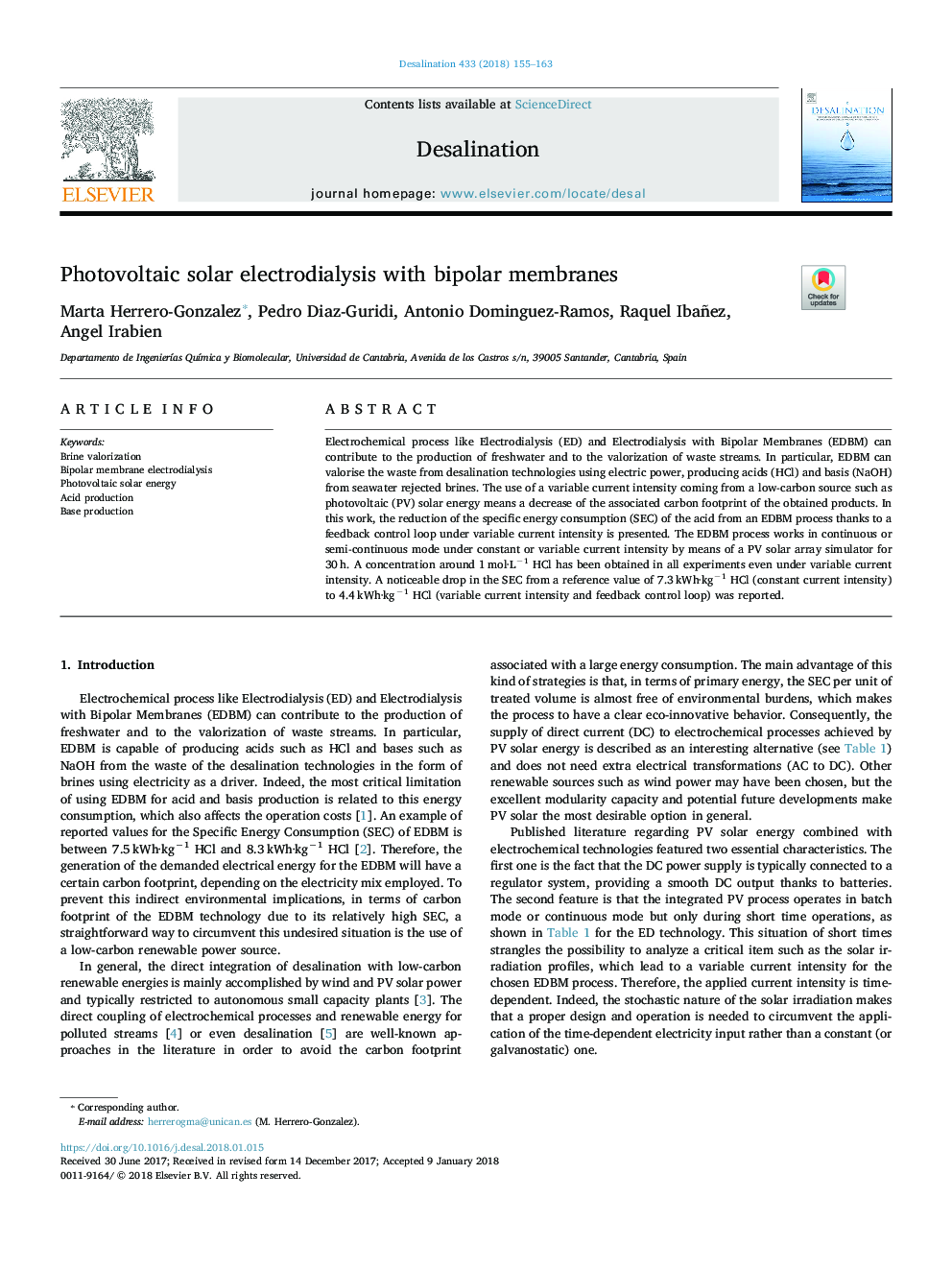| Article ID | Journal | Published Year | Pages | File Type |
|---|---|---|---|---|
| 7007986 | Desalination | 2018 | 9 Pages |
Abstract
Electrochemical process like Electrodialysis (ED) and Electrodialysis with Bipolar Membranes (EDBM) can contribute to the production of freshwater and to the valorization of waste streams. In particular, EDBM can valorise the waste from desalination technologies using electric power, producing acids (HCl) and basis (NaOH) from seawater rejected brines. The use of a variable current intensity coming from a low-carbon source such as photovoltaic (PV) solar energy means a decrease of the associated carbon footprint of the obtained products. In this work, the reduction of the specific energy consumption (SEC) of the acid from an EDBM process thanks to a feedback control loop under variable current intensity is presented. The EDBM process works in continuous or semi-continuous mode under constant or variable current intensity by means of a PV solar array simulator for 30â¯h. A concentration around 1â¯mol·Lâ1 HCl has been obtained in all experiments even under variable current intensity. A noticeable drop in the SEC from a reference value of 7.3â¯kWh·kgâ1 HCl (constant current intensity) to 4.4â¯kWh·kgâ1 HCl (variable current intensity and feedback control loop) was reported.
Related Topics
Physical Sciences and Engineering
Chemical Engineering
Filtration and Separation
Authors
Marta Herrero-Gonzalez, Pedro Diaz-Guridi, Antonio Dominguez-Ramos, Raquel Ibañez, Angel Irabien,
